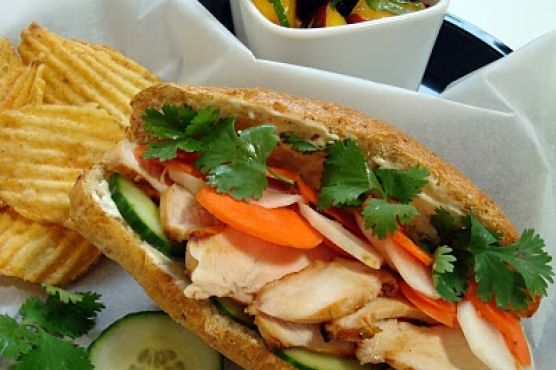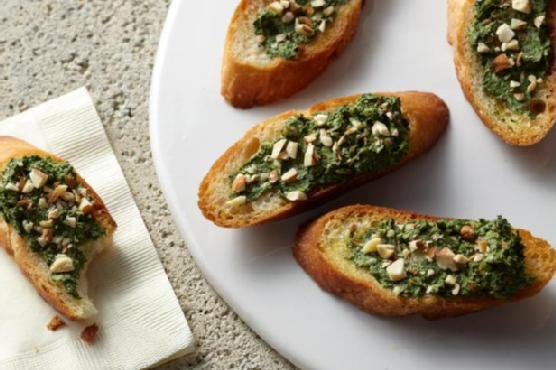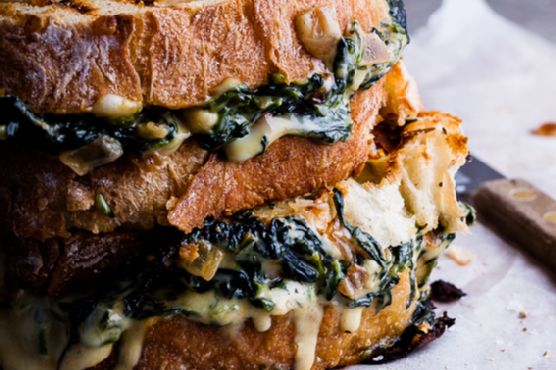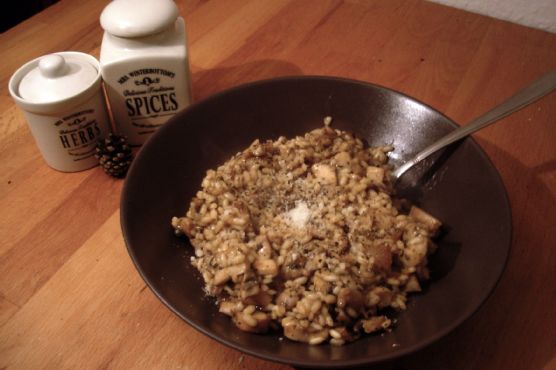Chicken Tamales with Tomatillo-Cilantro Sauce
Chicken Tamales with Tomatillo-Cilantro Sauce might be just the Mexican recipe you are searching for. This recipe makes 24 servings with 161 calories, 6g of protein, and 10g of fat each. For 58 cents per serving, this recipe covers 6% of your daily requirements of vitamins and minerals. This recipe is liked by 206 foodies and cooks. Head to the store and pick up tomatillos, salt and pepper, skinless boneless chicken breasts, and a few other things to make it today. It is a good option if you're following a gluten free diet. It is brought to you by Epicurious. From preparation to the plate, this recipe takes around 45 minutes. With a spoonacular score of 31%, this dish is not so spectacular. Chicken With Tomatillo And Cilantro Sauce, Layered Chicken Enchiladas with Tomatillo-Cilantro Sauce, and Saffron Chicken and Sausage Tamales with Cilantro Cream are very similar to this recipe.
Servings: 24
Ingredients:
1 teaspoon baking powder
2 bay leaves
2 cups plus 3 tablespoons chicken broth (reserved from poaching chicken)
1 cup lightly packed fresh cilantro, tender stems and leaves
About 30 corn husks
1 clove garlic
2 to 3 jalapeños, stemmed and halved
2 1/2 cups masa harina (cornmeal for tamales; Maseca brand is recommended)
Mexican crema, homemadeor store-bought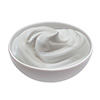
1 tablespoon olive oil
1 onion, sliced
1 teaspoon dried oregano
2 teaspoons salt
Salt and black pepper
1 pound (about 3 breasts) boneless, skinless chicken breasts
3/4 cup fresh lard or solid vegetable shortening
8 tomatillos, husks removed, rinsed, and quartered
2 tablespoons water
Equipment:
sauce pan
frying pan
blender
pot
paper towels
hand mixer
mixing bowl
aluminum foil
plastic wrap
microwave
bowl
Cooking instruction summary:
Preparation Poach and Shred the Chicken Combine the onion, garlic, salt, and water in a saucepan and bring to a boil. Add the chicken breasts, bay leaves, and oregano and decrease the heat to a simmer. Cook the chicken, partially covered, for 35 minutes, or until cooked through. To check for doneness, slit the chicken in half to make sure the interior is no longer pink. Allow the chicken to cool in the broth. When cool enough to handle, remove the chicken from the pan. Strain and reserve the broth. Shred the chicken by hand by pulling apart the fibers of the chicken with your fingers and set aside. Make the Tomatillo-Cilantro Sauce Combine the tomatillos, jalapeños, cilantro, garlic, and water in a blender and purée until well blended. Heat the oil in a sauté pan over medium heat. When the oil is hot, add the onion and sauté until the onion is limp and translucent, about 8 minutes. Add the tomatillo mixture. Season with salt and pepper. Cook for about 5 minutes, or until the sauce thickens. Add the shredded chicken to the sauce and stir to coat. Allow to cook for 3 more minutes. Check the seasoning and adjust if needed. Set aside. Prepare the Corn Husks Bring a large pot of water to a boil then remove from heat. Add the corn husks, making sure to submerge them under water, and cover the pot. Soak the corn husks in the pot for 20 minutes. They should be soft and flexible, and take on a deep beige color. Remove the corn husks from the water and wrap them in a damp paper towel until you are ready to use them. Prepare the Tamal Dough To make the masa, combine the masa harina with 2 cups of the reserved chicken broth and mix well. The masa should have the consistency of a stiff dough. Set aside. Put the lard in a mixing bowl. Beat the lard with an electric mixer until light and fluffy, about 1 minute. Add half of the masa and beat until well blended. Add the 3 tablespoons of the reserved chicken broth and the remaining masa and continue beating until a teaspoon of the dough dropped into a cup of cold water floats, about 10 minutes. If after 15 minutes of constant beating your dough does not float, move on (despite it not floating, the dough will be fine). Sprinkle the baking powder and the salt over the dough and mix in well. Assemble the Tamales Place a corn husk lengthwise in front of you with the wide side closest to you. Spread 2 tablespoons of the dough all over the bottom half (wide side) of the corn husk, leaving about a 1-inch-wide border on the left and right sides. Place 2 heaping tablespoons of the filling lengthwise down the center of the dough. Pick up the two long sides of the cornhusk and unite them. Allow the dough to surround the filling by pinching together the corn husk where the dough comes together. Roll both sides of the corn husks in the same direction over the tamal. Fold down the empty top section of the cornhusk and secure it by tying a thin strip of corn husk around the tamal (the top will be open). Repeat this process until all the corn husks or tamal dough are used up. Steam the Tamales Create a tamal steamer by crumpling a large piece of aluminum foil into a large ball. Place the foil ball in the center of a large saucepan and arrange the tamales "standing up" around it. You can stand tamales in front of each other; just make sure that the open end of the tamal is facing upward. Pour in 1/2 inch of water. Cover tightly with a lid and simmer for 40 minutes. Serve Serve warm accompanied by Mexican crema. COOKING NOTES INGREDIENTSLard versus ShorteningFor a truly authentic taste, you must use freshly rendered lard. If you buy commercial lard, make sure it is fresh, refrigerated lard; otherwise use vegetable shortening, which still produces a very good tamal.TECHNIQUESPoaching ChickenYou will end up with a juicier chicken if you allow it to cool in the broth. Make sure you save the broth, because it has a wonderful flavor that you will want to use when making the tamal dough.Working with Corn HusksBe careful not to open corn husks when they are dry because they will split and break. After soaking them in hot water, wrap in a damp paper towel until you are ready to use them. If they cool down and dry out before you are ready to use them, submerge them in hot water for a few minutes until pliable.ADVANCE PREPARATIONReheating TamalesCooked tamales can be refrigerated for a couple of days and reheated in a steamer or in the microwave. If you are using the microwave, put the tamales in a bowl and pour in 1/4 inch of water. Seal with plastic wrap and heat for 2 minutes. The steam created within the plastic will reheat the tamales. If reheating in a steamer, recreate the tamal steamer explained in the recipe and steam for 5 minutes.Assembled but uncooked tamales can be frozen. When you are ready to serve them, steam them straight from the freezer for 1 hour 20 minutes (twice the cooking time). Do not defrost before cooking. Reprinted with permission from Simply Mexican by Lourdes Castro, © April 2009 Ten Speed Press
Step by step:
1. Poach and Shred the Chicken
2. Combine the onion, garlic, salt, and water in a saucepan and bring to a boil.
3. Add the chicken breasts, bay leaves, and oregano and decrease the heat to a simmer. Cook the chicken, partially covered, for 35 minutes, or until cooked through. To check for doneness, slit the chicken in half to make sure the interior is no longer pink.
4. Allow the chicken to cool in the broth. When cool enough to handle, remove the chicken from the pan. Strain and reserve the broth. Shred the chicken by hand by pulling apart the fibers of the chicken with your fingers and set aside.
5. Make the Tomatillo-Cilantro Sauce
6. Combine the tomatillos, jalapeños, cilantro, garlic, and water in a blender and purée until well blended.
7. Heat the oil in a sauté pan over medium heat.
8. When the oil is hot, add the onion and sauté until the onion is limp and translucent, about 8 minutes.
9. Add the tomatillo mixture. Season with salt and pepper. Cook for about 5 minutes, or until the sauce thickens.
10. Add the shredded chicken to the sauce and stir to coat. Allow to cook for 3 more minutes. Check the seasoning and adjust if needed. Set aside.
11. Prepare the Corn Husks
12. Bring a large pot of water to a boil then remove from heat.
13. Add the corn husks, making sure to submerge them under water, and cover the pot. Soak the corn husks in the pot for 20 minutes. They should be soft and flexible, and take on a deep beige color.
14. Remove the corn husks from the water and wrap them in a damp paper towel until you are ready to use them.
15. Prepare the Tamal Dough
16. To make the masa, combine the masa harina with 2 cups of the reserved chicken broth and mix well. The masa should have the consistency of a stiff dough. Set aside.
17. Put the lard in a mixing bowl. Beat the lard with an electric mixer until light and fluffy, about 1 minute.
18. Add half of the masa and beat until well blended.
19. Add the 3 tablespoons of the reserved chicken broth and the remaining masa and continue beating until a teaspoon of the dough dropped into a cup of cold water floats, about 10 minutes. If after 15 minutes of constant beating your dough does not float, move on (despite it not floating, the dough will be fine).
20. Sprinkle the baking powder and the salt over the dough and mix in well.
21. Assemble the Tamales
22. Place a corn husk lengthwise in front of you with the wide side closest to you.
23. Spread 2 tablespoons of the dough all over the bottom half (wide side) of the corn husk, leaving about a 1-inch-wide border on the left and right sides.
24. Place 2 heaping tablespoons of the filling lengthwise down the center of the dough. Pick up the two long sides of the cornhusk and unite them. Allow the dough to surround the filling by pinching together the corn husk where the dough comes together.
25. Roll both sides of the corn husks in the same direction over the tamal. Fold down the empty top section of the cornhusk and secure it by tying a thin strip of corn husk around the tamal (the top will be open).
26. Repeat this process until all the corn husks or tamal dough are used up.
27. Steam the Tamales
28. Create a tamal steamer by crumpling a large piece of aluminum foil into a large ball.
29. Place the foil ball in the center of a large saucepan and arrange the tamales "standing up" around it. You can stand tamales in front of each other; just make sure that the open end of the tamal is facing upward.
30. Pour in 1/2 inch of water. Cover tightly with a lid and simmer for 40 minutes.
31. Serve
32. Serve warm accompanied by Mexican crema.
33. COOKING NOTES
34. INGREDIENTSLard versus Shortening
35. For a truly authentic taste, you must use freshly rendered lard. If you buy commercial lard, make sure it is fresh, refrigerated lard; otherwise use vegetable shortening, which still produces a very good tamal.TECHNIQUESPoaching Chicken
36. You will end up with a juicier chicken if you allow it to cool in the broth. Make sure you save the broth, because it has a wonderful flavor that you will want to use when making the tamal dough.Working with Corn Husks
37. Be careful not to open corn husks when they are dry because they will split and break. After soaking them in hot water, wrap in a damp paper towel until you are ready to use them. If they cool down and dry out before you are ready to use them, submerge them in hot water for a few minutes until pliable.ADVANCE PREPARATIONReheating Tamales
38. Cooked tamales can be refrigerated for a couple of days and reheated in a steamer or in the microwave. If you are using the microwave, put the tamales in a bowl and pour in 1/4 inch of water. Seal with plastic wrap and heat for 2 minutes. The steam created within the plastic will reheat the tamales. If reheating in a steamer, recreate the tamal steamer explained in the recipe and steam for 5 minutes.Assembled but uncooked tamales can be frozen. When you are ready to serve them, steam them straight from the freezer for 1 hour 20 minutes (twice the cooking time). Do not defrost before cooking.
39. Reprinted with permission from Simply Mexican by Lourdes Castro, © April 2009 Ten Speed Press
Nutrition Information:
covered percent of daily need





